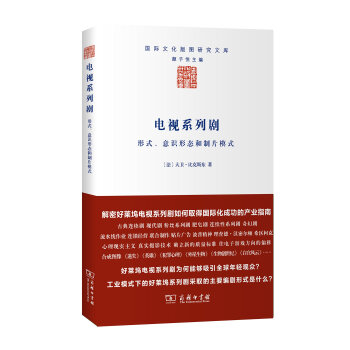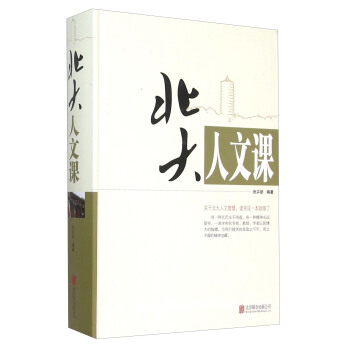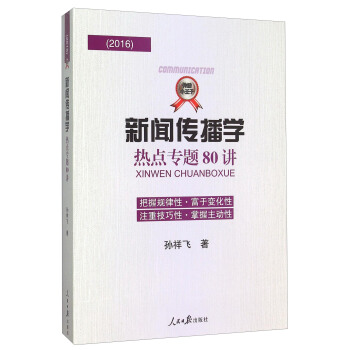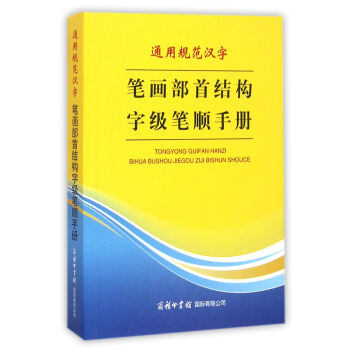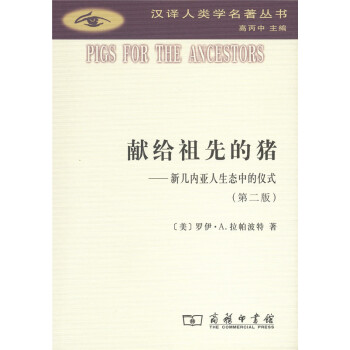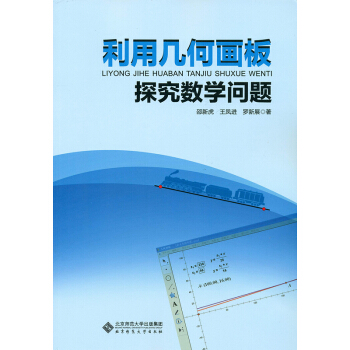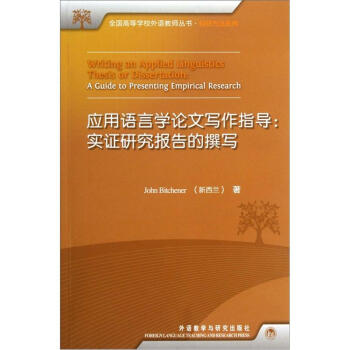

具体描述
内容简介
《应用语言学论文写作指导:实证研究报告的撰写》系统指导如何撰写实证性研究论文,全书包括八章,除第一章为本书引言外,其他七章分别介绍了论文的七个组成部分,包括:摘要、引言、文献综述、研究方法、研究结果、结果讨论和结论。每章采用相同结构:所讲论文章节的功能;实现这些功能的步骤;以一篇论文作实例分析;该章节需要注意的语言特征;常见问题等。本书可作为应用语言学硕士生和博士生论文写作课教材,或本领域及其他文科专业研究者撰写论文的指导,还可作为外语教师培训参考资料。目录
总序导读
Preface
Acknowledgements
Chapter 1 Background
What Is the Book about?
Who Is the Book for?
Why Has the Book Been Written?
How Does the Book Meet the Content, Structure,
Linguistic and Presentational Needs of Students?
How Is the Book Organized?
What Is the Sample Masters Thesis about and
Why Has It Been Selected?
How Can This Book Be Used?
Further Reading
Chapter 2 Abstract
Introduction
The Functions of a Thesis Abstract
The Content and Structure of a Thesis Abstract
Analysis of a Masters Thesis Abstract
Analysis of a Doctoral Thesis Abstract
A Key Linguistic Feature of a Thesis Abstract
Frequently Asked Questions
Further Activities
Further Reading
Chapter 3 Introduction
Introduction
The Functions of a Thesis Introduction
The Content and Structure of a Thesis Introduction
Analysis of a Masters Thesis Introduction
Some Key Linguistics Features of a Thesis Introduction
Frequently Asked Questions
Further Activities
Further Reading
Chapter 4 Literature Review
Introduction
The Functions of a Thesis Literature Review
The Content and Structure of a Thesis Literature Review
Conclusion of the Literature Review
Some Key Linguistic Features of Thesis Literature Reviews and
Approaches to Processing the Literature
Frequently Asked Questions
Further Activities
Further Reading
Chapter 5 Methodology
Introduction
The Functions of a Thesis Methodology Chapter
The Content and Structure of a Thesis Methodology Chapter
Sample Analysis of WTC Thesis Methodology Chapter
Some Key Linguistic Features of a Thesis Methodology Chapter
Frequently Asked Questions
Further Activities
Further Reading
Chapter 6 Results
Introduction
The Functions of a Thesis Results Chapter
The Content and Structure of a Thesis Results Chapter
Sample Analysis of a Masters Thesis Results Chapter
Quantitative Results
Some Key Linguistic and Presentation Features of a Thesis
Results Chapter
Frequently Asked Questions
Further Activities
Further Reading
Chapter 7 Discussion of Results
Introduction
The Functions of a Thesis Discussion of Results
The Content and Structure of a Thesis Discussion of Results
Sample Analysis of a Masters Thesis Discussion of Results
Some Key Linguistic Features of a Thesis Discussion of Results
Frequently Asked Questions
Further Activities
Further Reading
Chapter 8 Conclusion
Introduction
The Functions of a Thesis Conclusion
The Content and Structure of a Thesis Conclusion
Sample Analysis of a Masters Thesis Conclusion
Some Key Linguistic Features of a Thesis Conclusion
Frequently Asked Questions
Further Activities
Further Reading
Appendix
精彩书摘
Sinularities between the Two AbstractsAs well as providing an abstract of similar length to that of the first abstract, I think you can see here that there are other similarities between the two abstracts. Both include the same five moves. Broadly speaking, the strategies employed in the creation of these moves are similar even though some differences are evident.
Differences between the Two Abstracts
Moves within a Sentence
The first difference between the abstracts concerns the inclusion of more than one move within.a single sentence. This pattern characterizes a number of sentences in the first abstract but it does not occur at all in the second abstract. While links between moves are clearly and explicitly signaled when two moves appear within a single sentence, it does not necessarily mean that links are not made when this does not occur. Sentential links can be clearly and explicitly made between moves by other cohesive means. In comparing only one Masters and one Doctoral thesis, we could easily assume that these are differences that reflect the two types of thesis. However, this is not the case. It is rather a difference in individual style and preference. Any thesis needs to establish links between moves and between sentential propositions. The extent to which one approach is adopted more than another may be a feature of particular disciplines but generally it is the result of the writer's communicative style.
Introduction
Secondly, the Introduction move is slightly longer in the second abstract than it is in the first. This may have occurred because the author wanted to explain not only the context and importance of the topic in some detail and the need for further research in the area but also what is meant by the key term 'incidental focus on form'. The importance of defining and backgrounding this particular approach to form-focused instruction in some detail arises from the confusion that could result for those not familiar with different approaches to form-focused instruction. For example, the second language acquisition literature makes a significant distinction between two types of form-focused instructions but the difference is only signaled by a change in the use of one letter - either a capital 'S' (focus on formS) or a lower case 's' (focus on forms).
Additionally, the second abstract seems to emphasize the limited amount of empirical research on the effectiveness of incidental focus on form, whereas this focus is less explicit in the first abstract. Again, the difference is not really one that distinguishes a Masters from a Doctoral thesis. Rather, it should be seen as a difference between the focus that two authors wish to provide or between two areas of investigation where the background of one needs more explanation than that of the other.
Purpose
A third difference is revealed in the more extensive statement of purpose provided in the first one. Whereas the second abstract referred to three purposes or aims within a single sentence, the first abstract identified each purpose or aim across four sentences and, in doing so, provided us with a more comprehensive and perhaps clearer understanding of the various aims of the study. The three key words in the purpose statement of the second abstract ('occurrence', 'nature' and 'effectiveness') become clear as we consider the Method and Product moves later in the abstract. It is possible that the author of the second abstract may have assumed that we would be more familiar with this field of investigation so confined himself to a single sentence.
Methodology
Fourthly, while similar detail on the methodology of each study is presented in the two abstracts, the second abstract devotes only four sentences to it, compared with the seven sentences provided in the first abstract. It is possible that fewer design features were specified by this author because of the single data source. By comparison, data for the first study, outlined in the first abstract, were sourced in several ways and these needed to be outlined in the abstract so that we would know how reliable and valid the findings of the study are. The approach to data analysis is not outlined in the first abstract but is described in detail in the methodology chapter of the thesis. It is likely that the author chose to refer to how the data were analyzed because of the relative novelty of the approach.
Product
The Purpose move of the second abstract, in sentence 4, revealed the following two primary foei of the research: (1) the occurrence and nature of incidental focus on form and (2) its effectiveness in promoting second language learning. The Product move is therefore presented in two parts as follows: (1) sentences 9-14 outline the first key finding and its associated findings and (2) sentences 15-16 refer to the second key finding. Compared with the Product move of the first abstract, similar detail on the findings of the second study is presented in the Product move of the second abstract.
……
用户评价
这本书的封面设计给我留下了极为深刻的印象。那种沉稳的蓝色调与那一抹精致的金色字体,一下子就将我带入了一种严肃而专业的学术氛围中。我本来对“应用语言学”这个领域有些敬而远之,总觉得它离我的实际研究太远,但这本书的封面传递出的信号是:它不仅是理论的殿堂,更是实践的指南。触摸着封面的哑光质感,我仿佛能感受到作者在编撰过程中的一丝不苟。它不像市面上那些花里胡哨的教科书,光看封面就知道内容会很“水”。恰恰相反,这种克制的、内敛的设计风格,反而让我更加确信,里面沉淀的定是经过千锤百炼的真知灼见。特别值得一提的是,封底的排版逻辑也极其清晰,作者的资历简介简短有力,没有丝毫的自我标榜,仅仅是用事实说话,这让我对后续的阅读充满了期待,我期待这本书能像它给我的第一印象一样,既有高度,又有深度,是那种我愿意长久地放在书桌上,随时可以翻阅的案头工具书。
评分数据分析与讨论这一章节,简直是我心中的“救星”。过去我对“结果”部分的撰写总是感到无所适从,总是在罗列统计数字和解释其理论意义之间徘徊不定。这本书提供了一个非常实用的“三段式”汇报结构,它清晰地划分了“报告发现”、“解释发现”和“关联理论”这三个层次。我特别欣赏作者对于“讨论”部分的强调,他不仅仅满足于说“我的发现支持了XX理论”,而是深入探讨了“为什么会是这个结果?如果结果不理想,那又意味着什么?”这种对结果进行审慎、多角度解读的训练,极大地提升了我对研究结论的自信心和严谨度。书中那些关于如何处理非预期结果的案例分析,让我意识到,即便是“失败”的实验,只要分析得当,也能为学术界提供宝贵的反思价值。这种坦诚和对科研伦理的尊重,是我在其他同类书籍中极少见到的。
评分这本书的附录部分的设计也体现了作者对读者体验的极致关怀。通常来说,附录往往是那些被匆忙塞进来的、整理得有些杂乱的参考资料堆砌。但在这里,附录更像是精心准备的“工具箱”。从常用的统计软件操作提示的精简指南,到规范的引用格式示例(特别是针对我们学科特定的格式要求),再到一份细致入微的写作自查清单,每一项都显得那么恰到好处。特别是那份自查清单,它不是一个笼统的建议列表,而是针对实证论文的各个部分,提出了如“你的P值是否得到了恰当的语境化解释?”或“图表标题是否独立于正文也能被理解?”这类具体到位的疑问。这份详尽的清单,让我在最后定稿时,仿佛有了一位不厌其烦的、经验老到的导师在身边进行最后的校对,极大地增强了我对最终提交版本的信心和把握。
评分在对文献综述部分的深度剖析上,这本书展现出了远超预期的前瞻性和批判性。很多指导性书籍仅仅是教会你如何“堆砌”前人的研究成果,最终形成一个平铺直叙的文献列表,但这本书显然走得更远。作者强调的不是数量的积累,而是“对话的艺术”。他引导读者去识别现有研究中的“知识缺口”和“方法论的盲区”,并精准地指出如何将自己的研究立足于这些尚未被填补的空白之上。我发现,这种训练不仅适用于我的论文写作,更渗透到了我对未来学术生涯的规划中。通过作者提供的框架,我学会了如何对同一批核心文献进行多维度的解构和重组,从而生成一个具有强烈前沿性和论证性的理论基础。那种感觉就像是,之前我只是拿着一把小铲子在地上挖土,而这本书给了我一台挖掘机,让我能够以更宏观的视角去审视整个学科的地貌,从而确定最佳的“开采点”。
评分当我翻开第一章时,最先吸引我的是作者处理复杂概念时的那种“化繁为简”的能力。我曾尝试阅读一些关于实证研究方法论的专著,往往在读完几页后就因为充斥着过多的术语和绕口的句式而感到头晕目眩,最终不得不放弃。然而,这位作者的笔触却是如此的流畅和清晰,仿佛他不是在写一本严谨的学术著作,而是在耐心地引导一位初学者进行一场科学探索之旅。他对研究假设的构建、变量的选择与测量,以及如何科学地设计对照组的论述,简直是为我解开了长久以来的一个核心困惑。他没有停留在理论的抽象层面,而是紧密结合了实际的语言教学或语言习得的案例,使得那些原本抽象的统计概念立刻变得鲜活、可操作。我尤其欣赏他那种循序渐进的叙事节奏,每当引入一个新的统计工具时,他都会先用一个非常生活化的例子来铺垫,确保读者在知识的阶梯上走得稳健,而不是被突如其来的难度吓退。这种教学相长的写作风格,使得阅读过程本身就像是一次非常成功的、有引导的实验。
评分非常好 送货及时 相信京东
评分到货速度比预计的快 货到时正值午睡期间 要是能避开这个时间段就好了 因为第一次在京东买东西 给个中庸的评价吧 总体还好
评分读书的好处有很多.给你介绍以下几点: 1.可以使我们增长见识,不出门,便可知天下事. 2.可提高我们的阅读能力和写作水平. 3.可以使我们变的有修养. 4.可以使我们找到好工作. 5.可以使我们在竞争激烈的社会立于不败之地. ...... 其实读书有很多好处,就等有心人去慢慢发现. 最大的好处是可以让你有属于自己的本领靠自己生存。 让你的生活过得更充实,学习到不同的东西。感受世界的不同。 不需要有生存的压力,必竞都是有父母的负担。 虽然现在读书的压力很大,但请务必相信你是幸福的。 在我们国家还有很多孩子连最基本的教育都没办法享受的。 所以,你现在不需要总结,随着年龄的成长,你会明白的,还是有时间多学习一下。 新年快乐!新学年成绩更上一层楼。 古代的那些文人墨客,都有一个相同的爱好-------读书.书是人类进步的阶梯.读书是每个人都做过的事情,有许多人爱书如宝,手不释卷,因为一本好书可以影响一个人的一生.那么,读书有哪些好处呢?1读书可以丰富我们的知识量.多读一些好书,能让我们了解许多科学知识.2读书可以让我们拥有"千里眼".俗话说的好"秀才不出门,便知天下事.""运筹帷幄,决胜千里."多读一些书,能通古今,通四方,很多事都可以未卜先知.3读书可以让我们励志.读一些有关历史的书籍,可以激起我们的爱国热情.4读书能提高我们的写作水平.读一些有关写作方面的书籍,能使我们改正作文中的一些不足,从而提高了我们的习作水平.读书的好处还有一点,就是为我们以后的生活做准备.那么,读哪些书比较好呢?读什么书是根据自己的年龄段和自己的文化水平来做选择的.幼儿应该读一些启蒙类的书.如<<幼儿经典枕边故事>>,<<唐诗三百首>>等.3~4年级的小学生应该读一些漫画类,知识类,文学类的书.如儿童文学中华上下五千年等。5~6年级的小学生应该读一些知识类,文学类,传记类的书。如《女生日记》,《调皮的日子》,《百科全书》等。 在书的海洋里,我们领略到了匹诺曹的诙谐有趣;走进了小兵张嘎的那个抗日年代,激起了无限的爱国热情;你听,这是什么声音,啊,原来是《巴黎圣母院》里的那个敲钟人在敲钟呢;啊,凤凰人,在我们的论坛里,我闻到了一股清新 读书的好处有很多.给你介绍以下几点: 1.可以使我们增长见识,不出门,便可知天下事. 2.可提高我们的阅读能力和写作水平. 3.可以使我们变的有修养. 4.可以使我们找到好工作. 5.可以使我们在竞争激烈的社会立于不败之地. ...... 其实读书有很多好处,就等有心人去慢慢发现. 最大的好处是可以让你有属于自己的本领靠自己生存。 让你的生活过得更充实,学习到不同的东西。感受世界的不同。 不需要有生存的压力,必竞都是有父母的负担。 虽然现在读书的压力很大,但请务必相信你是幸福的。 在我们国家还有很多孩子连最基本的教育都没办法享受的。
评分性价比很高 书是正版的,之前有过担心滴。内容还行吧,尽管我没觉得有多充实。冲着是名人写的,书的质量还行就不挑剔了。卖家发货挺快的,第二天就收到了。书还是不错的,精装外壳,发货速度真心的快,评价晚了,书不错,应该再早点看的。推荐看,只是粗浅认识了一下,已经感觉到自己逻辑思维更加清晰。好书,受益匪浅,如果不好好研究一下此书,绝对是人生一大遗憾。这天女友打电话问我借本书,说她写作需要参考,我说我家没有,但我可以帮你找。我一边接电话一边就上网搜索,很快找到,立马告诉她网上京东有。她说我不会在网上买书啊。我嘲笑她一番,然后表示帮她买。很快就写好订单写好她的地址发出去了。果然第二天,书就送到她那儿了。她很高兴,我很得意。过了些日子,我自己又上网购书,但下订单后,左等右等不来。以前从来不超过一星期的。我正奇怪呢,刘静打电话来笑嘻嘻地说,哎,也不知道是谁,心眼儿那么好,又帮我订了好几本书,全是我想要的,太好了。我一听,连忙问她是哪几本?她一一说出书名,晕,那是我买的书啊。原来我下订单的时候,忘了把地址改过来,送到她那儿去了。这下可把她乐死了,把我先前对她的嘲笑全还给我了。不过京东送货确实很快。我和女友都很满意。好了,废话不说。|好了,我现在来说说这本书的观感吧,坐得冷板凳,耐得清寂夜,是为学之根本;独处不寂寞,游走自在乐,是为人之良质。潜心学问,风姿初显。喜爱独处,以窥视内心,反观自我;砥砺思想,磨砺意志。学与诗,文与思;青春之神思飞扬与学问之静寂孤独本是一种应该的、美好的平衡。在中国传统文人那里,诗人性情,学者本分,一脉相承久矣。现在讲究“术业有专攻”,分界逐渐明确,诗与学渐离渐远。此脉悬若一线,惜乎。我青年游历治学,晚年回首成书,记忆清新如初,景物历历如昨。挥发诗人情怀,摹写学者本分,意足矣,足已矣。现在,京东域名正式更换为JDCOM。其中的“JD”是京东汉语拼音(JING DON|G)首字母组合。从此,您不用再特意记忆京东的域名,也无需先搜索再点击,只要在浏览器输入JD.COM,即可方便快捷地访问京东,实现轻松购物。名为“Joy”的京东吉祥物我很喜欢,TA承载着京东对我们的承诺和努力。狗以对主人忠诚而著称,同时也拥有正直的品行,和快捷的奔跑速度。太喜爱京东了。|给大家介绍本好书《我们如何走到这一步》自序:这些年,你过得怎么样我曾经想过,如果能时光穿梭,遇见从前的自己,是否可以和她做朋友。但我审慎地不敢发表意见。因为从前的自己是多么无知,这件事是很清楚的。就算怀着再复杂的爱去回望,没准儿也能气个半死,看着她在那条傻乎乎的路上跌跌撞撞前行,忍不住开口相劝,搞不好还会被她厌弃。
评分书质量很好。值得大家购买!!
评分帮同事买的,应该可以吧
评分到货速度比预计的快 货到时正值午睡期间 要是能避开这个时间段就好了 因为第一次在京东买东西 给个中庸的评价吧 总体还好
评分好
评分我看了这本书籍很好,有不错的感想。认真学习了这本书,给我几个感受
相关图书
本站所有内容均为互联网搜索引擎提供的公开搜索信息,本站不存储任何数据与内容,任何内容与数据均与本站无关,如有需要请联系相关搜索引擎包括但不限于百度,google,bing,sogou 等
© 2025 book.idnshop.cc All Rights Reserved. 静思书屋 版权所有

![当代世界学术名著:诠释学与人文科学:语言、行为、解释文集 [Hermeneutics and the Human Sciences Essays on Language,Action and Interpretation] pdf epub mobi 电子书 下载](https://pic.tinynews.org/11038257/rBEIC1AFDgkIAAAAAADqhJHVDBUAAEDzAJn244AAOqc818.jpg)
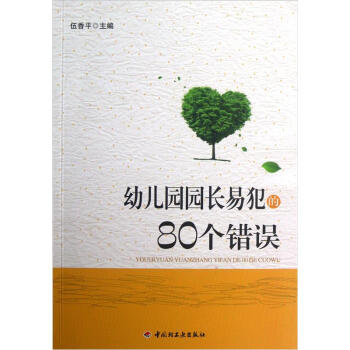
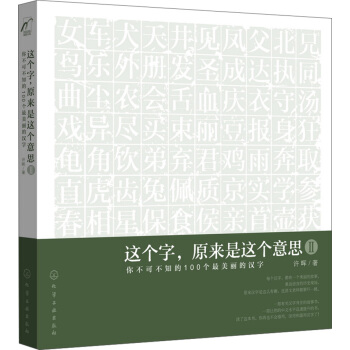
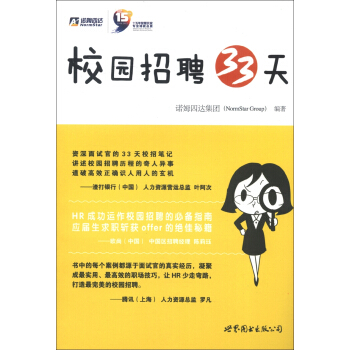
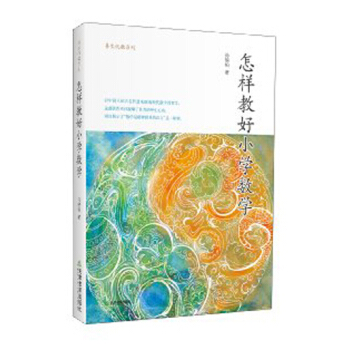
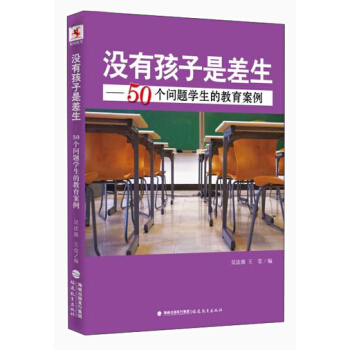
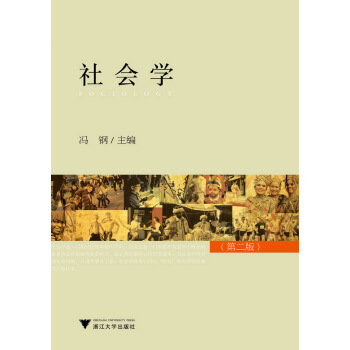
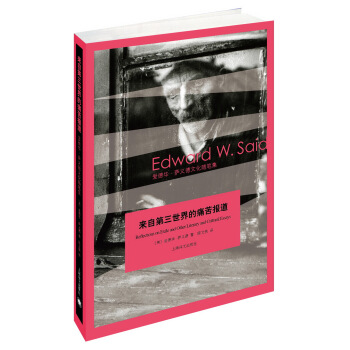
![民主主义与教育 [Democracy and Education:An Introduction to the Philosophy of Education] pdf epub mobi 电子书 下载](https://pic.tinynews.org/11468497/5385af39N5cc526ef.jpg)



![多元智能理论与学前儿童能力评价 [Project Spectrum:Preschool Assessment Handbook] pdf epub mobi 电子书 下载](https://pic.tinynews.org/11722367/55a316a0N1dcfa859.jpg)
![0-8岁儿童学习环境创设 [Educational Laboratory] pdf epub mobi 电子书 下载](https://pic.tinynews.org/11736579/55b19d3bNfc7fe247.jpg)
